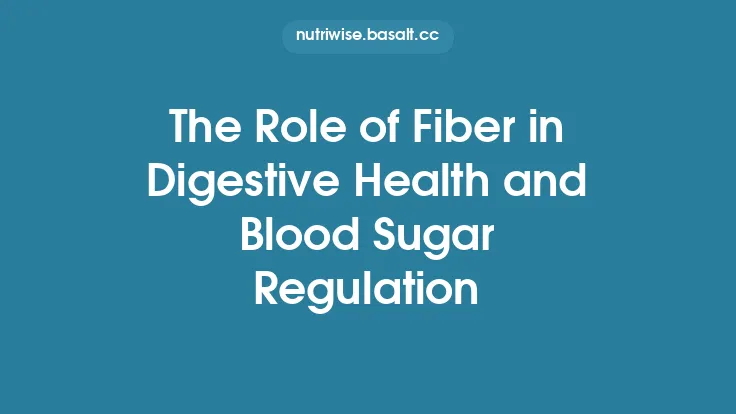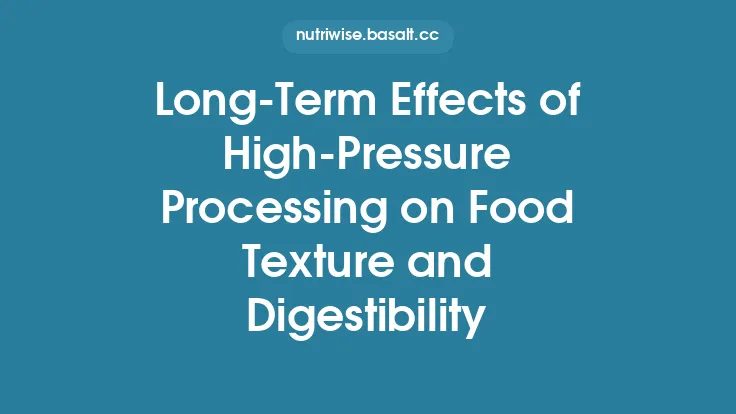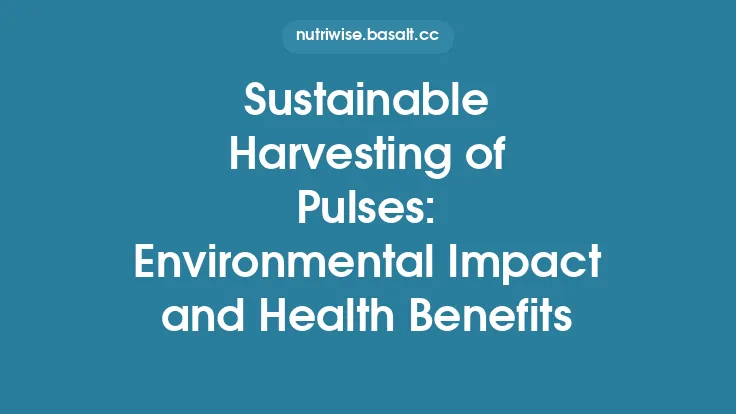The modern food supply is dominated by products that have been refined to improve shelf life, texture, and visual appeal. While these changes often make foods more convenient and palatable, they also alter the natural architecture of dietary fiber—a key player in maintaining a healthy digestive system. Understanding how refinement reshapes fiber structure and the downstream effects on gut function is essential for anyone looking to make informed dietary choices.
What Is Food Refinement?
Food refinement refers to a series of industrial operations that strip away components of whole grains, legumes, fruits, and vegetables that are not deemed essential for the final product’s appearance or taste. Common practices include:
- Milling and sifting – removal of bran and germ from cereal grains to produce white flour or polished rice.
- Peeling and coring – discarding the outer layers of fruits and vegetables, which are rich in insoluble fiber.
- Solvent extraction – using chemicals to isolate starches or oils, leaving behind fiber‑laden residues.
- Enrichment and fortification – adding back selected nutrients (e.g., iron, B‑vitamins) while the bulk of fiber remains absent.
These steps are distinct from cooking, heat treatment, or fermentation; they primarily involve physical separation and selective extraction, fundamentally changing the fiber profile of the food.
Types of Dietary Fiber Affected by Refinement
Dietary fiber is a heterogeneous group of plant‑derived carbohydrates that resist digestion in the small intestine. It can be broadly classified into:
| Fiber Type | Typical Sources | Functional Role in the Gut |
|---|---|---|
| Insoluble fiber (cellulose, hemicellulose, lignin) | Bran, wheat husk, vegetable skins | Adds bulk, accelerates transit, promotes regularity |
| Soluble fiber (β‑glucans, pectins, gums) | Oats, barley, fruit pulp, legumes | Forms viscous gels, slows glucose absorption, serves as prebiotic substrate |
| Resistant starch (type 2 & 3) | Uncooked potatoes, legumes, whole grains | Ferments in the colon, producing short‑chain fatty acids (SCFAs) |
Refinement disproportionately removes insoluble fiber because it is concentrated in the outer layers (bran, skins, husks). Soluble fiber, while more evenly distributed, can also be lost during processes that isolate starches or oils. Resistant starch content declines when whole grains are milled into fine flours, as the crystalline structure that resists enzymatic breakdown is disrupted.
Structural Changes in Fiber During Refinement
The physical and chemical architecture of fiber determines how it interacts with water, gut microbes, and the intestinal wall. Refinement induces several key alterations:
- Particle Size Reduction
Milling breaks down fiber into finer particles, increasing surface area. While this can enhance water‑binding capacity in the short term, it also makes the fiber more accessible to digestive enzymes, reducing its resistance to breakdown.
- Loss of Cell Wall Integrity
Whole plant cells encapsulate fiber within a matrix of cellulose, hemicellulose, and pectin. Mechanical removal of outer layers ruptures these walls, exposing inner starches and sugars. The protective barrier that normally slows nutrient release is compromised.
- Altered Crystallinity of Cellulose
The crystalline regions of cellulose provide rigidity and resistance to enzymatic attack. Refinement often converts these ordered structures into amorphous forms, which are more readily hydrolyzed by microbial cellulases.
- Decreased Fermentability
The removal of fermentable substrates (e.g., pectins, certain hemicelluloses) diminishes the pool of nutrients available to colonic bacteria, leading to reduced production of beneficial SCFAs such as butyrate.
Collectively, these changes shift fiber from a largely inert, bulking agent to a more digestible, less functional component.
Consequences for Gut Microbiota
The gut microbiome thrives on a diverse array of fermentable fibers. When refinement strips away these substrates, several microbial shifts occur:
- Reduced Diversity – A narrower range of fiber types supports fewer bacterial species, potentially lowering overall microbial richness.
- Decreased SCFA Production – Butyrate, propionate, and acetate are key metabolites that nourish colonocytes, regulate inflammation, and influence glucose homeostasis. Lower fiber intake translates to diminished SCFA levels.
- Proliferation of Opportunistic Bacteria – In the absence of complex fibers, some bacteria turn to mucin (the protective mucus layer) as an energy source, which can thin the mucus barrier and increase susceptibility to inflammation.
Long‑term consumption of refined, low‑fiber foods has been linked to dysbiosis—a microbial imbalance associated with conditions such as irritable bowel syndrome (IBS), inflammatory bowel disease (IBD), and metabolic syndrome.
Impact on Gastrointestinal Motility and Satiety
Insoluble fiber’s primary mechanical role is to add bulk and stimulate peristalsis. When refinement removes this bulk:
- Slower Transit Times – The colon receives less material to trigger stretch receptors, leading to prolonged stool residence and a higher risk of constipation.
- Impaired Satiety Signaling – Fiber contributes to the feeling of fullness by expanding in the stomach and releasing gut hormones (e.g., peptide YY, GLP‑1). Refined foods, being less voluminous, often result in quicker return of hunger, promoting over‑consumption.
These effects create a feedback loop where low‑fiber diets encourage higher caloric intake, further exacerbating weight gain and related metabolic disturbances.
Health Implications: From Constipation to Metabolic Disorders
The downstream health outcomes of fiber loss through refinement are multifaceted:
- Constipation and Hemorrhoidal Disease – Insufficient bulk leads to hard, dry stools that strain the rectal walls.
- Colorectal Cancer Risk – SCFAs, especially butyrate, have anti‑neoplastic properties. Reduced production may diminish protective effects against tumor formation.
- Blood Glucose Dysregulation – Soluble fibers slow carbohydrate absorption; their absence can cause sharper post‑prandial glucose spikes.
- Elevated Cholesterol – Certain soluble fibers bind bile acids, promoting their excretion and lowering serum LDL cholesterol. Refinement reduces this cholesterol‑lowering mechanism.
- Weight Management Challenges – Lower satiety and higher glycemic responses can contribute to weight gain and obesity.
While refined foods are not inherently “bad,” the cumulative impact of chronic fiber depletion can significantly impair digestive health and overall metabolic balance.
Strategies to Mitigate Fiber Loss in Refined Foods
Food manufacturers and consumers alike can adopt measures to preserve or restore fiber content:
- Re‑Incorporation of Bran and Germ – Adding back a proportion of the removed outer layers during flour production (e.g., “whole‑grain‑enriched” flours) restores insoluble fiber.
- Use of Isolated Fiber Ingredients – Incorporating oat β‑glucan, inulin, or resistant starch powders can compensate for lost soluble fiber.
- Particle Size Optimization – Coarser milling retains more intact cell structures, preserving functional fiber.
- Gentle Extraction Techniques – Employing water‑based or enzymatic extraction instead of harsh solvents reduces collateral fiber damage.
- Fortification with Prebiotic Fibers – Adding specific prebiotic fibers (e.g., fructooligosaccharides) supports beneficial microbiota even in refined products.
These interventions can be implemented without compromising the sensory qualities that drive consumer acceptance.
Practical Recommendations for Consumers
- Read Labels Carefully – Look for terms like “whole grain,” “bran added,” or “high in fiber.” Products that list fiber sources near the top of the ingredient list are more likely to contain meaningful amounts.
- Mix Refined and Whole Options – Pair white rice with a side of brown rice or quinoa, or blend white bread with whole‑grain crackers to boost overall fiber intake.
- Add Fresh or Dried Fruit and Vegetables – Incorporating skins (e.g., apple peel) and fibrous vegetables (e.g., carrots, leafy greens) into meals compensates for fiber lost during processing.
- Include Legume‑Based Sides – Beans, lentils, and chickpeas are dense in both soluble and insoluble fiber and can be added to soups, salads, or grain bowls.
- Consider Fiber Supplements Wisely – If dietary adjustments are insufficient, a high‑quality fiber supplement (e.g., psyllium husk) can help meet daily recommendations, but it should not replace whole‑food sources.
Aim for at least 25 g of fiber per day for women and 38 g for men, as suggested by most dietary guidelines, and adjust based on individual tolerance and health goals.
Future Directions in Food Processing and Fiber Preservation
Research is actively exploring ways to reconcile the industrial benefits of refinement with the nutritional necessity of fiber:
- Hybrid Milling Technologies – Combining coarse and fine milling streams to produce flours that retain a balanced fiber profile while maintaining desirable texture.
- Encapsulation of Fiber – Protecting delicate soluble fibers within micro‑capsules that survive processing and release their functional properties during digestion.
- Genetic Breeding for Fiber‑Rich Varieties – Developing grain and legume cultivars with higher intrinsic fiber content that can withstand refinement without substantial loss.
- Digital Monitoring of Fiber Integrity – Using near‑infrared spectroscopy (NIRS) and other rapid analytical tools to assess fiber structure in real time during production.
These innovations promise to deliver refined foods that are both convenient and supportive of digestive health, moving the industry toward a more fiber‑friendly future.
By recognizing how refinement reshapes fiber architecture and by taking proactive steps—whether through product reformulation or personal dietary choices—we can safeguard the essential role of fiber in promoting a thriving gut and a healthier life.





